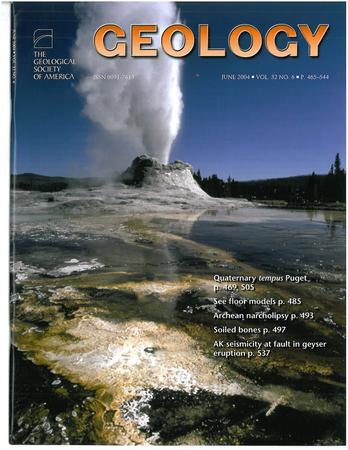Transient evidence of shallow coseismic submarine landslides shaping canyon head geomorphology: Insights from the 2016 Kaikōura earthquake, New Zealand
IF 4.6
1区 地球科学
Q1 GEOLOGY
引用次数: 0
Abstract
The impact of recurrent landslides on submarine canyon morphology, sediment dynamics, and tsunami hazard is poorly understood. This study presents the first detailed inventory of earthquake-induced submarine landslides, using high-resolution (2 m) pre- and postevent multibeam bathymetry of the upper Kaikōura Canyon, New Zealand, following the Mw 7.8, 2016 Kaikōura earthquake. Most failures initiated as small (∼1950 m2), shallow disaggregating slides (<10 m) in postglacial sediments draped over bedrock at the canyon headwall. Despite their size, ∼11.2 Mm3 of material failed from the upper canyon, nearly 100 times the volume loss per unit area observed on land, resulting in up to 210 m of headwall retreat and erasure of small gully systems. These shallow slides transitioned into flows, contributing to the 935 Mm3 gravity flow deeper in the canyon. Corrected digital elevation model (DEM) differencing shows submarine landslide volumes were 1.5−3 times larger than postevent estimates would predict. The sediment mobilized by shallow landsliding from the Kaikōura Canyon headwall provides valuable insights that could improve sediment gravity flow and submarine landslide hazard models. Despite the large sediment volume, no tsunami was generated, likely due to failure occurring as numerous small disaggregating slides. These findings indicate that landslide-driven tsunami hazard in active margin settings may be lower than expected.浅层同震海底滑坡形成峡谷头部地貌的瞬态证据:来自2016年Kaikōura新西兰地震的见解
反复发生的滑坡对海底峡谷形态、泥沙动力学和海啸灾害的影响尚不清楚。本研究采用高分辨率(2米)多波束测深技术,对2016年Kaikōura级7.8级地震后新西兰Kaikōura峡谷上部的地震诱发海底滑坡进行了首次详细调查。大多数破坏开始于小的(~ 1950 m2),在覆盖在峡谷顶壁基岩上的冰川后沉积物中发生浅崩解滑动(10米)。尽管它们的规模很大,但上游峡谷的物质流失了约11.2 Mm3,几乎是在陆地上观察到的单位面积体积损失的100倍,导致高达210米的顶壁退缩和小沟壑系统的消失。这些浅层滑坡转变为水流,形成了峡谷深处935毫米的重力流。经校正的数字高程模型(DEM)差异显示,海底滑坡体积比事后估计预测的要大1.5 - 3倍。Kaikōura峡谷头壁浅层滑坡所动员的沉积物为改进沉积物重力流和海底滑坡灾害模型提供了有价值的见解。尽管泥沙量很大,但没有产生海啸,这可能是由于许多小的崩解滑动发生的破坏。这些发现表明,在活动边缘环境下,滑坡驱动的海啸危险性可能低于预期。
本文章由计算机程序翻译,如有差异,请以英文原文为准。
求助全文
约1分钟内获得全文
求助全文
来源期刊

Geology
地学-地质学
CiteScore
10.00
自引率
3.40%
发文量
228
审稿时长
6.2 months
期刊介绍:
Published since 1973, Geology features rapid publication of about 23 refereed short (four-page) papers each month. Articles cover all earth-science disciplines and include new investigations and provocative topics. Professional geologists and university-level students in the earth sciences use this widely read journal to keep up with scientific research trends. The online forum section facilitates author-reader dialog. Includes color and occasional large-format illustrations on oversized loose inserts.
 求助内容:
求助内容: 应助结果提醒方式:
应助结果提醒方式:


